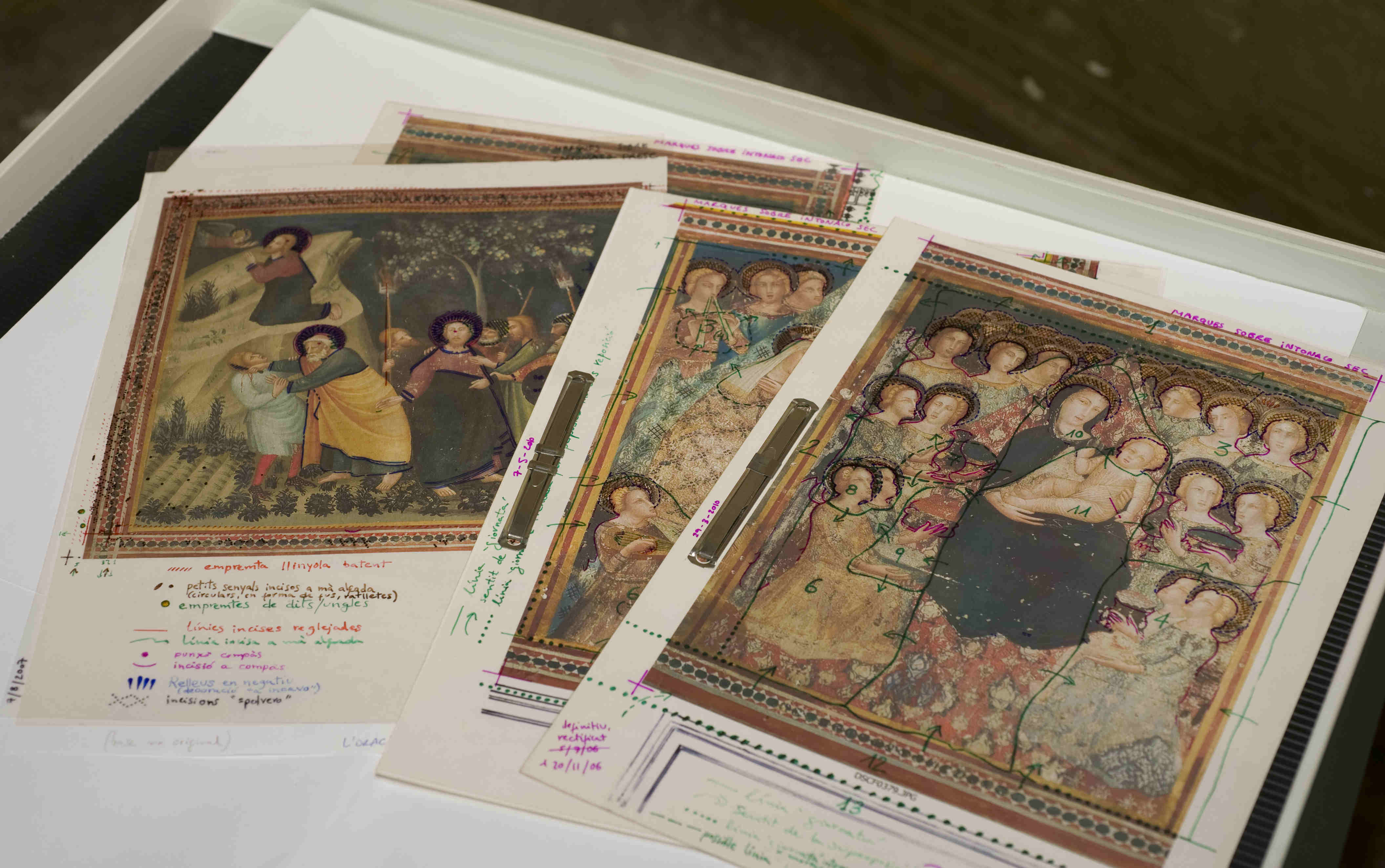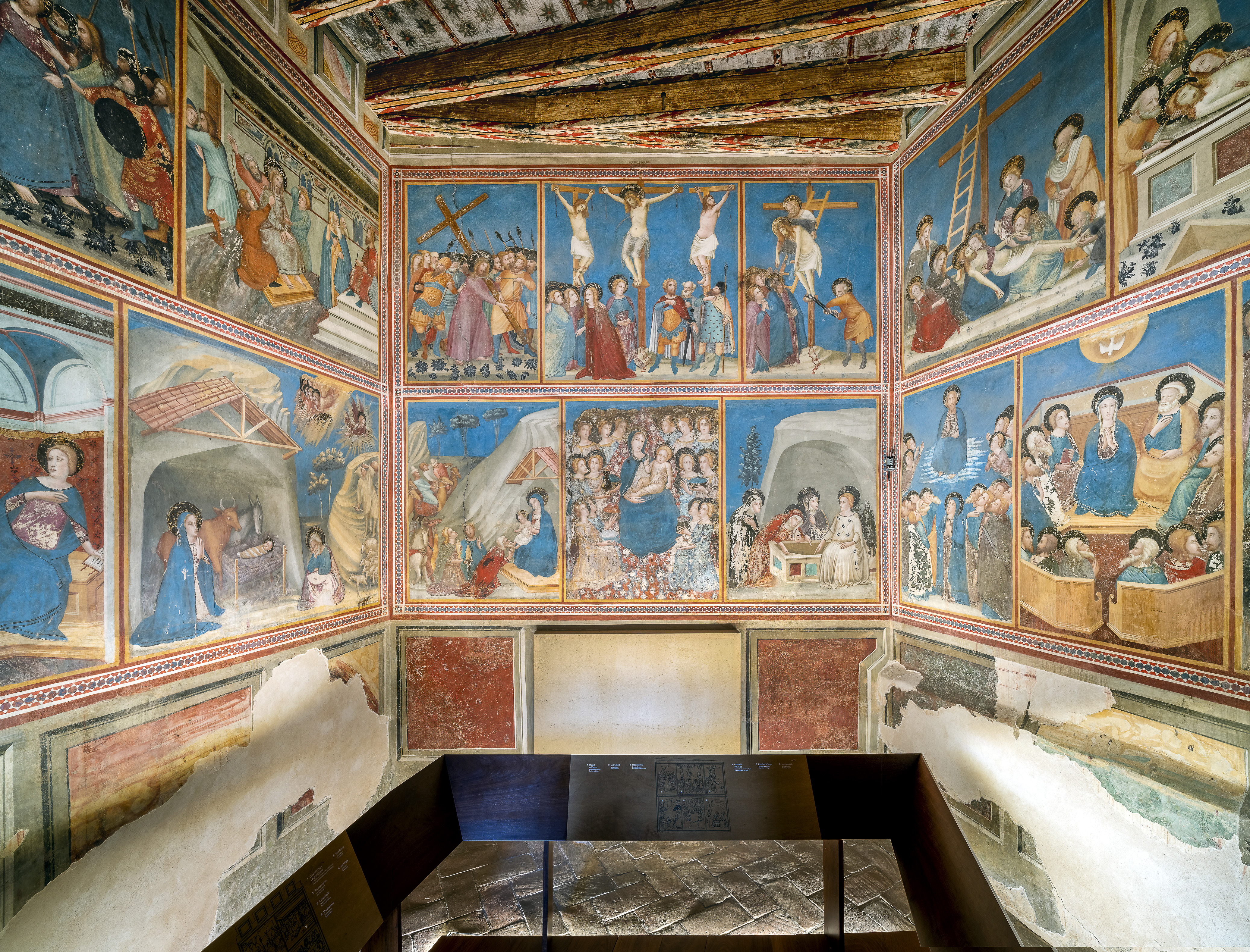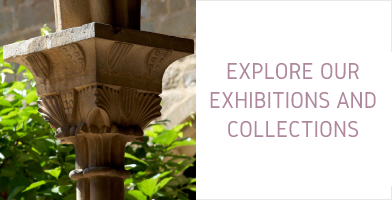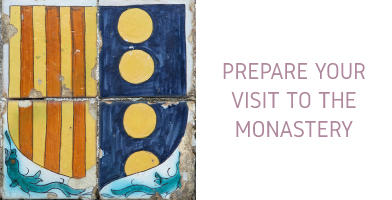St Michael’s Chapel
St Michael’s Chapel is decorated with a magnificent series of murals, which according to two contracts dating from 1343 and 1346 were a commission given to the painter Ferrer Bassa by the Abbess Francesa ça Portella, who wanted to make the room her private cell. Although the contract specified that the chapel had to be painted with oils, the murals were finally created using a mixed technique: a fresco and a secco. The paintings are the earliest example in Spain and Portugal of the Italian Trecento style. The iconography is inspired by the Marian devotions and represents the Passion of Christ, the Joys of the Virgin Mary and various figures of saints.
The narrative cycle runs from left to right in three lines of pictures. The upper one, dedicated to the Passion of Christ, contains seven scenes: the Agony in the Garden and Arrest of Jesus, the Insults, the Path to Calvary, the Crucifixion, the Descent from the Cross, the Piety and the Holy Sepulchre. The central strip is dedicated to the Joys of the Virgin and presents the following scenes: the Annunciation, the Nativity of Jesus, the Adoration of the Magi, the Triumph of the Virgin Mary, the Resurrection of Jesus, the Ascension of Jesus, the Coming of the Holy Spirit and the Coronation of Mary. In the lower strip, restoration work has uncovered a marbled representation. Fifteen saints are painted at the sides, distributed between the central and upper strips. At the higher level, in order from left to right, St Michael, St John the Baptist, St James, St Domnin, St Honoratus, St Elizabeth and St Stephen can be seen, while St Narcissus, St Francis, St Clare, St Agnes, St Catherine, St Eulàlia, St Barbara and St Aleix appear on the middle level.

The chapel was conceived as a private place of prayer for the Abbess Francesa ça Portella, though it eventually became the monastery archive. Between 1801 and 1870 it was used as a cloakroom and later converted into an abbey cell. Meanwhile, the murals remained hidden and protected behind the furniture, isolated for centuries from outside light, damp and dust. The chapel paintings were rediscovered in the late 19th century and their true value came to light.
In the mid-20th century, the murals were object of initial restoration by the Italian maestro Arturo Cividini and the subject of a first doctoral thesis by Manuel Trens. From this moment on, there was growing interest in the murals owing to their Italianate character, which represented a stylistic and technical innovation at the time of their completion. The influence of Italian masters such as Giotto, the Lorenzetti brothers and Simone Martini can be appreciated.
In 2005, a comprehensive project was designed and started, which envisaged several phases: the first, research and study, had to precede the direct intervention on the murals; The second phase, in 2013, focused on the restoration of the roof, and then, in 2014-2015, a third phase was started focusing on the consolidation and adherence of the paintings to its support, the cleaning and the removal of repainted, and subsequent reintegrations, which allowed the recovery of elements that had been left below, as well as the complete restoration of the central frieze of the chapel. In the final phase, executed between 2017 and 2018, the repaints that covered the original marble masonry paintings were removed, as well as completing the restoration of the other panels in the chapel and reintegrating lost paint with the technique of reglatino al fresco. The chapel of St. Michel finally returns to shine bright.
- Presentation 1
-
History
2
-
The Space
3










